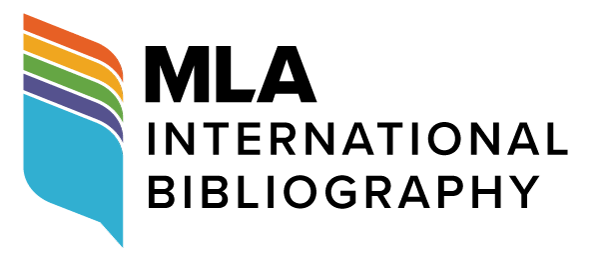Process and Product, Transfer and Adaptation Proper, Real-World Practice
The Essentials of Text-to-Screen Adaptation
DOI:
https://doi.org/10.18485/bells.2023.15.17Keywords:
film adaptation, novel-to-film adaptation, text-to-screen adaptation, intertextual dialogism, adaptation as process, adaptation as product, adaptation reception, transfer, adaptation properAbstract
Understanding the development of adaptation studies and the restrictions, requirements, and possibilities of literature-to-film adaptations enables an effective engagement with adaptations of narrative literature into film. An overview of the disparate approaches to defining adaptations, of Robert Stam’s reevaluation of adaptations on the basis of ‘intertextual dialogism’, and of Linda Hutcheon’s layered understanding of adaptations as processes and products sets up the essential framework for understanding text-to-screen adaptations. The demands for transfer and adaptation proper within adaptations of literary texts to films, and the similarities and differences between cinematic and literary codes complement the essential framework for effectively evaluating text-to-screen adaptations.
Downloads
References
Cartmell D. (1999). Introduction. In D. Cartmell and I. Whelehan (eds.), Adaptations: from text to screen, screen to text. New York: Routledge, 23–28.
Cartmell D. and I. Whelehan (2007). Introduction – Literature on screen: a synoptic view. In D. Cartmell and I. Whelehan (eds.), The Cambridge Companion to Literature on Screen. Cambridge/New York: Cambridge University Press, 1–12.
Chatman, S. B. (1978). Story and Discourse: Narrative Structure in Fiction and Film. Ithaca, New York: Cornell University Press.
Chatman, S. (1990). Coming to Terms: The Rhetoric of Narrative in Fiction and Film. Ithaca, New York: Cornell University Press.
Elliott, K. L. (2004). Novels, Films, and the Word/Image Wars. In R. Stam and A. Raengo (eds.), A Companion to Literature and Film. Oxford: Blackwell, 1–22.
Gallagher, B. (1978). Film Imagery, Literary Imagery: Some Distinctions. College Literature, 5(3), 157–173.
Hutcheon, L. (2006). A Theory of Adaptation. New York/London: Routledge.
Lake, D. (2012). Adapting the Unadaptable – The Screenwriter’s Perspective. In D. Cartmell (ed.), A Companion to Literature, Film, and Adaptation. Oxford: Wiley-Blackwell, 408–415.
Leitch, T. (2012). Adaptation and Intertextuality, or, What isn’t an adaptation, and What does it matter?. In D. Cartmell (ed.), A Companion to Literature, Film, and Adaptation. Oxford: Wiley-Blackwell, 87–104.
McFarlane, B. (2007). Reading Film and Literature. In D. Cartmell and I. Whelehan (eds.), The Cambridge Companion to Literature on Screen. Cambridge/New York: Cambridge University Press, 15–28.
McFarlane, B. (1996). Novel to Film: An Introduction to the Theory of Adaptation. Oxford: Oxford University Press.
Snyder, M. H. (2017). Adaptation in Theory and Practice: Mending the Imaginary Fence. In T. Leitch (ed.) The Oxford Handbook of Adaptation Studies. New York: Oxford University Press, 101–116.
Stam, R. (2000). Film Theory: An Introduction. Malden, Massachusetts: Blackwell.
Tripković-Samardžić, V. (2016). Američka drama na filmu: Tenesi Vilijams. [Doctoral dissertation, University of Belgrade].
Downloads
Published
Issue
Section
License
Copyright (c) 2023 Vera Nikolić

This work is licensed under a Creative Commons Attribution-ShareAlike 4.0 International License.
Authors who publish with this journal agree to the following terms:
- Authors are confirming that they are the authors of the submitting article, which will be published (print and online) in Belgrade English Language and Literature Studies by the Faculty of Philology, University of Belgrade (Faculty of Philology, Studentski trg 3, 11000 Belgrade, Serbia). Author’s name will be evident in the printed article in the journal. All decisions regarding layout and distribution of the work are in hands of the publisher.
- Authors guarantee that the work is their own original creation and does not infringe any statutory or common-law copyright or any proprietary right of any third party. In case of claims by third parties, authors commit their self to defend the interests of the publisher, and shall cover any potential costs.
- Authors retain copyright and grant the journal right of first publication with the work simultaneously licensed under a Creative Commons Attribution-ShareAlike 4.0 International License that allows others to share the work with an acknowledgement of the work's authorship and initial publication in this journal.
- Authors are able to enter into separate, additional contractual arrangements for the non-exclusive distribution of the journal's published version of the work (e.g., post it to an institutional repository or publish it in a book), with an acknowledgement of its initial publication in this journal.
- Authors are permitted and encouraged to post their work online (e.g., in institutional repositories or on their website) prior to and during the submission process, as it can lead to productive exchanges, as well as earlier and greater citation of published work.




